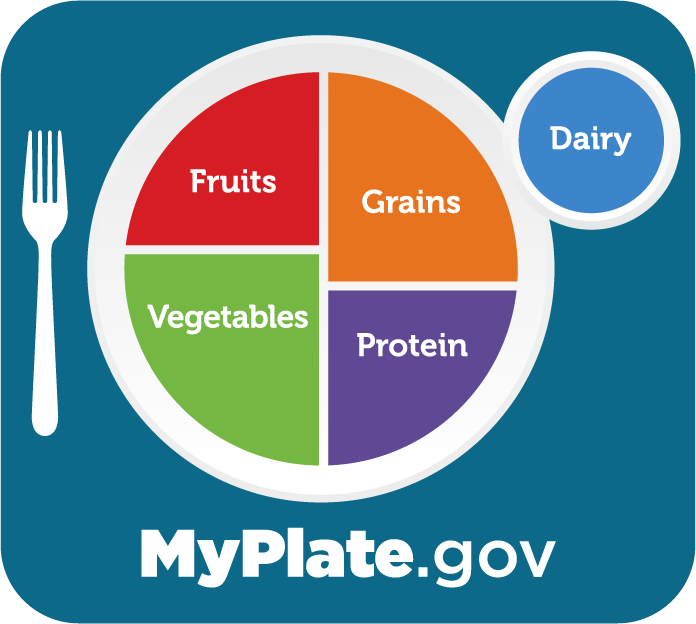Understanding MyPlate (Grades 6-8)
Students will explore appropriate serving size and learn how to make good dietary decisions by understanding the components of nutrition as illustrated by MyPlate.

Background
Lesson Activities
Recommended Companion Resources
Credits
Author
Lyndi Perry and Debra Spielmaker | Utah Agriculture in the Classroom
Standards
Indiana Content Area Standards
-
English Language Arts.Grade 6.RV.1
Acquire and use accurately grade-level appropriate general academic and content-specific words and phrases; gather vocabulary knowledge when considering a word or phrase important to comprehension or expression.
- Vocabulary in Literature and Nonfiction Texts.6.RV.3.2: Determine the meaning of words and phrases as they are used in a nonfiction text, including figurative, connotative, and technical meanings.
-
English Language Arts.Grade 6.SL.1
Listen actively and adjust the use of spoken language (e.g., conventions, style, vocabulary) to communicate effectively with a variety of audiences and for different purposes.
- Discussion and Collaboration.6.SL.2.2: Elaborate and reflect on ideas under discussion by identifying specific evidence from materials under study and other resources.
- Presentation of Knowledge and Ideas.6.SL.4.2: Create engaging presentations that include multimedia components (e.g. graphics, images, music, sound) and visual displays in presentations to clarify information.
-
English Language Arts.Grade 7.RV.1
Acquire and use accurately grade-appropriate general academic and content-specific words and phrases; gather vocabulary knowledge when considering a word or phrase important to comprehension or expression.
- Vocabulary in Literature and Nonfiction Texts.7.RV.3.2: Determine the meaning of words and phrases as they are used in a nonfiction text, including figurative, connotative, and technical meanings; analyze the impact of a specific word choice on meaning and tone.
-
English Language Arts.Grade 7.SL.1
Listen actively and adjust the use of spoken language (e.g., conventions, style, vocabulary) to communicate effectively with a variety of audiences and for different purposes.
- Discussion and Collaboration.7.SL.2.1: Engage effectively in a range of collaborative discussions (e.g., one-on-one, in groups, and teacher-led) on grade- appropriate topics, texts, and issues, building on others ideas and expressing personal ideas clearly.
- Discussion and Collaboration.7.SL.2.2: Investigate and reflect on ideas under discussion by identifying specific evidence from materials under study and other resources.
-
English Language Arts.Grade 8.RV.1
Acquire and use accurately grade-appropriate general academic and content-specific words and phrases; gather vocabulary knowledge when considering a word or phrase important to comprehension or expression.
- Vocabulary in Literature and Nonfiction Texts.8.RV.3.2: Determine the meaning of words and phrases as they are used in a nonfiction text, including figurative, connotative, and technical meanings; analyze the impact of specific word choices on meaning and tone, including analogies or allusions to other texts.
-
English Language Arts.Grade 8.SL.1
Listen actively and adjust the use of spoken language (e.g., conventions, style, vocabulary) to communicate effectively with a variety of audiences and for different purposes.
- Discussion and Collaboration.8.SL.2.1: Engage effectively in a range of collaborative discussions (e.g., one-on-one, in groups, and teacher-led) on grade- appropriate topics, texts, and issues, building on others ideas and expressing personal ideas clearly.
- Discussion and Collaboration.8.SL.2.2: Examine, analyze, and reflect on ideas under discussion by identifying specific evidence from materials under study and other resources.
